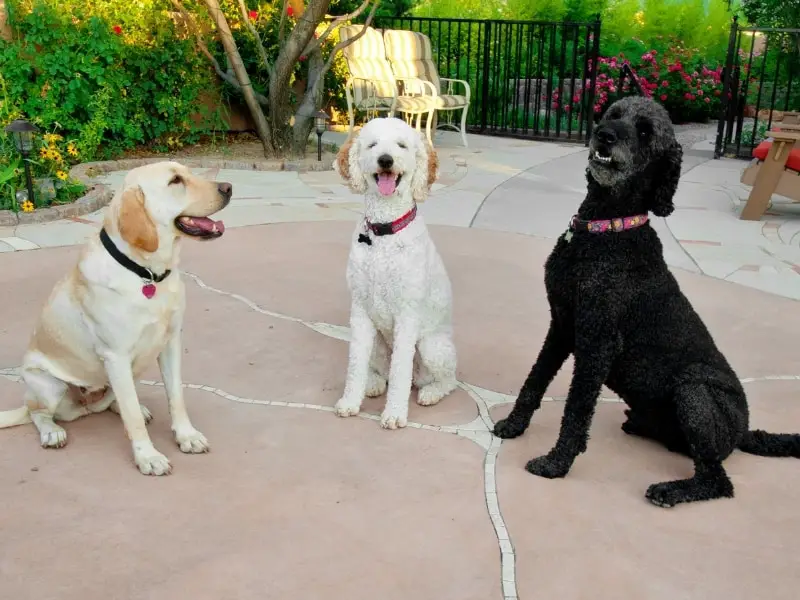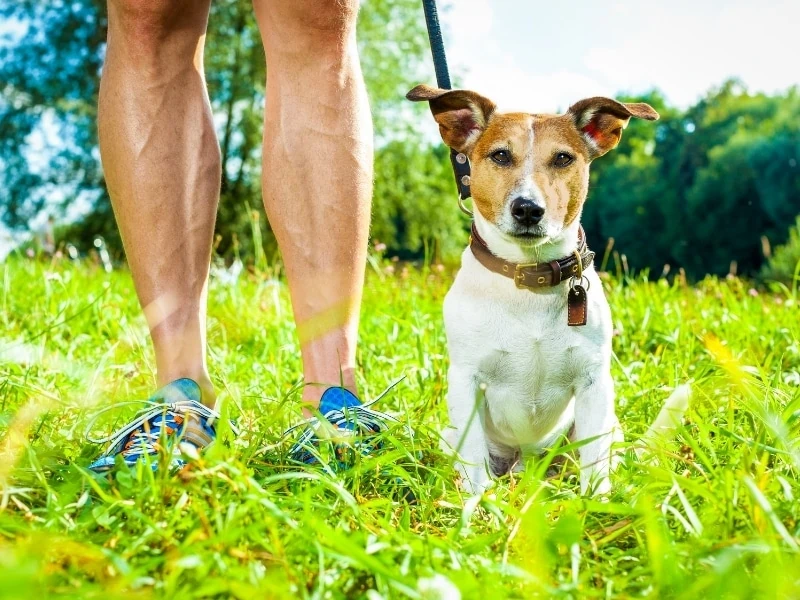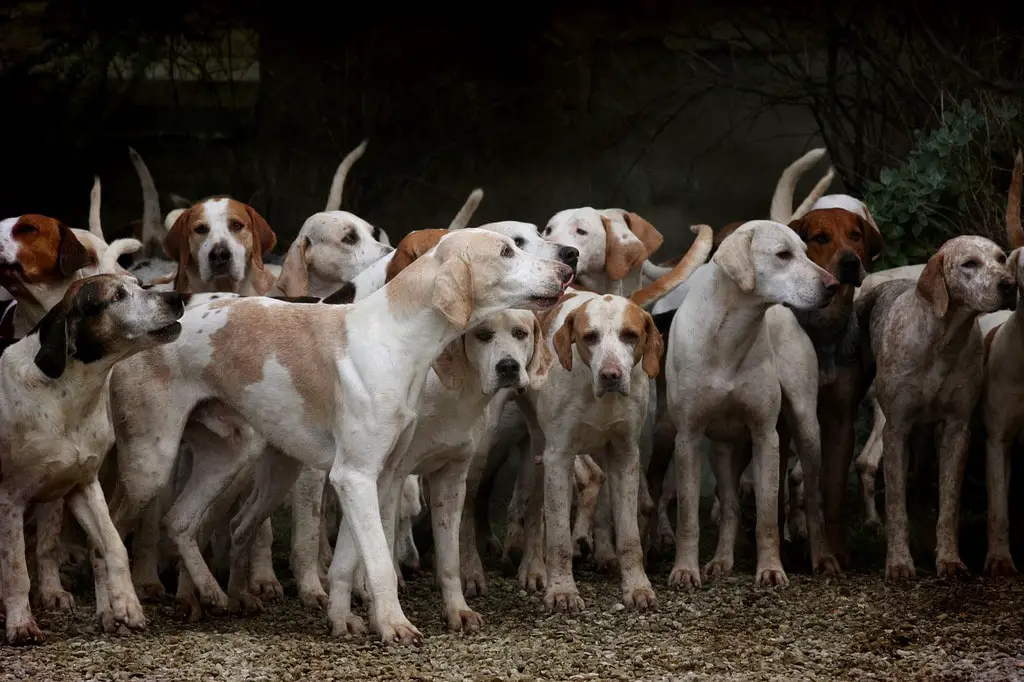We, humans, have this need to know what the other person is thinking, and we transfer this to desiring to understand what our canine companion is thinking. In addition to wondering how they perceive us, many dog owners wonder, “What do dogs think when they see other dogs?”
When your dog sees other dogs they are likely to think of them as a friend and potential playmate, a foe, or a possible threat to their pack. They feed off of visual and olfactory cues to make such determinations. You might be able to tell what your dog thinks of another based on if they’re relaxed or tensed up, quiet or vocal, or if their fur is ruffled?
This article will discuss what dogs might be thinking when they encounter another dog by exploring how they may react. Knowing your dog’s thoughts toward another dog will enable you to create positive experiences for your dog.
Can a Dog Tell What Another Dog Wants?

Dogs need to know what the other dog is thinking to discern if the other dog wants to play, mate, or fight.
To do this, each dog must pay very close attention to what each of them is doing. Through visual cues and their sense of smell, they are able to predict what the other dog is likely to do, effectively reading each other’s minds (source).
Visual Cues
Through research on how dogs play, it is becoming apparent that dogs have individual thoughts, are aware that other animals have individual thoughts and will react accordingly. This is known as the Theory of Mind (source).
Dogs are big on fair play, and when that breaks down, play can not continue. Dogs must have empathy and trust of the other dog or dogs, and dogs have a moral code.
In studies performed by Marc Bekoff, Ph.D., a professor emeritus at the University of Colorado, Boulder, along with other researchers, dogs effectively communicate their intentions (source).
They observed dogs engaging in four fundamental aspects of play. The first rule, ask to play. Once established, the other rules follow naturally: be honest, follow the rules, and apologize when you’re wrong. Dogs keep track of what is happening when they play.
When asking another dog to play, a dog will bow, paw their face, approach and quickly withdraw, feign left and right, and even run at the other dog. If one dog bites the other dog during play, the offender will most likely bow to the other dog to say, “Sorry, let’s keep playing.”
Olfactory Cues
Dogs have an incredible nose with over 100 million sensory receptors. In an article written by Lynn Buzhardt, DVM, she states that a dog’s nose communicates using chemicals emitted by another dog. They can identify through their sense of smell if the other dog is friendly or aggressive (source).
They also remember a friend from years ago and remember who was the alpha in the relationship.
Reading their Response to Other Dogs
It is not easy to know what a human or a dog is thinking if they cannot assign words to their thoughts. It is even more challenging for our dogs to communicate their thoughts to us. They do not speak human. Beyond guessing and attributing our thoughts to their thoughts, it is far better to learn how they communicate.
Body Language
Dogs communicate what they think through their body language, for instance, tail wags and posture.
When your dog sees another dog, they may be wagging their tail, but that does not mean they are happy. The speed and direction the tail is going in is an important factor in knowing what your dog may be thinking regarding the other dog (source).
A tail pointing down and wagging in a twitchy fast motion could mean your dog thinks the other dog may be a threat. A slow neutral wag is your dog thinking the other dog presents no threat.
Where your dog distributes their weight speaks to your dog’s thoughts better than words. For instance, if your dog shifts their weight back, they think the other dog is a threat and tries to get away from them.
If your dog shifts their weight forward, they may think the other dog is interesting and are trying to get to them, or that dog is a threat, and they will protect you.
Again, knowing your dog’s individual body language cues is the only way you will know what they think about the other dog.
Vocalization
Your dog will tell you what they think about another dog by literally speaking to you. Your dog may not use words, but they do have barks, whimpers, and growls. They are trying to tell you they think the other dog a threat to them or you, or, perhaps, they went to meet them to play.
As wags have different meanings, so do barks.
The pitch, spacing, and the number of barks communicate different thoughts. For instance, as you pass another dog, your dog begins to bark at a high pitch, and they think the other dog is friendly and wants to play.
Generally, a dog whimpers when they are hurt or uncomfortable. They may whimper, telling you they do not feel comfortable around the other dog. Again, if they think the other dog wants to meet them, they may pull toward them and emit an excited whimper, whatever that is for your dog.
Growling is not positive, and your dog may be thinking the other dog is a threat, or they are warning you that they do not know what the other dog will do. No matter the reason, a growl is your dog’s way of alerting you to danger.
Does a Leash Affect a Dog’s Thinking About Another Dog?

An important consideration to understanding what your dog may be thinking when they see another dog is whether they are on or off-leash.
On-Leash
While on-leash, your dog may think and react very differently to another dog than you might expect. Your usual sweet, adorable dog, who would not hurt a flea, has suddenly become aggressive toward the other dog (source).
One reason for this embarrassing behavior is most likely as simple as fear or distrust. When a dog is fearful, that dog may display aggressive behavior, telling the other dog, “Back off, I do not trust you.”
Of course, if you are anxious about the other dog, your dog will feel your emotion right down the leash, and your dog may be reacting to your thoughts and not their own.
While on-leash, your dog cannot protect themself effectively. No matter what your dog is thinking about the other dog, your dog cannot allow themself to get into an unprotectable situation.
Off-Leash
Dogs behave very differently toward one another when not on a leash, which is why scientists do much of their research on dogs during play. Off-leash dogs have the opportunity to fight or flee and will give another dog a chance based on their own evaluation of them, not yours.
Before having your dog meet another dog off-leash, make sure you both have control of your dogs in the event the dogs begin to fight. A dog park is an excellent place for dogs to meet and greet. It is a controlled yet open area where your dog has the opportunity to act on their thoughts about another dog.
One thing to keep in mind when at the dog park is not all dogs belong there. Just remain aware of your dog’s thinking, and you should be able to relax and watch your dog enjoy themself.
Final Thoughts
Dogs are individuals with a level of intelligence that we are only beginning to understand. As humans and owners, we want to know what our dogs are thinking. Until they learn to use words, we will have to rely on how they react when they see another dog.


0 Comments